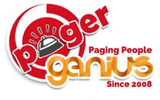How Having a Restaurant Paging System Increases Customer Satisfaction
Having an efficient restaurant paging system helps improve the overall organization of your restaurant. From the seating to the communication between kitchen staff and floor staff the entire production of a restaurant becomes more seamless and easier to navigate. Probably the best thing about having a restaurant paging system is the increased customer satisfaction among customers.
Let’s go over in a bit more detail some of the ways that restaurant pagers can increase customer satisfaction.
Increased Productivity and Communication Between Staff
It can be difficult to communicate between so many different people in even the smallest of restaurant settings. Servers have to communicate with kitchen staff and also with customers. This can cause staff to be overwhelmed and ultimately results in frustrated customers, staff and late orders. If a restaurant has a reliable paging system in place however wait staff can immediately know when kitchen staff has finished an order and get it out to the client in a reasonable time frame.
Increased Profits
Although it may not necessarily seem like it at first a proper restaurant paging system can result better profits for your restaurant. By increasing productivity among all staff more orders get completed each hour. This means valuable minutes are shaved off of customers’ wait time. This can add up to extra hours each day and as we all know, time is money.
Better Customer Retention
Almost as important as the actual food itself is the dining experience. Customers want to feel cared for and waited on more so at a restaurant than probably anywhere else. If a customer enters your restaurant and there aren’t any tables currently available they can easily receive a pager that’ll make them aware of the next available table. This allows customers to leave the restaurant and be notified when their table is available. This leads to a more pleasant experience for the customer which increases the likelihood that they will return in the future or even recommend your restaurant to they know.
